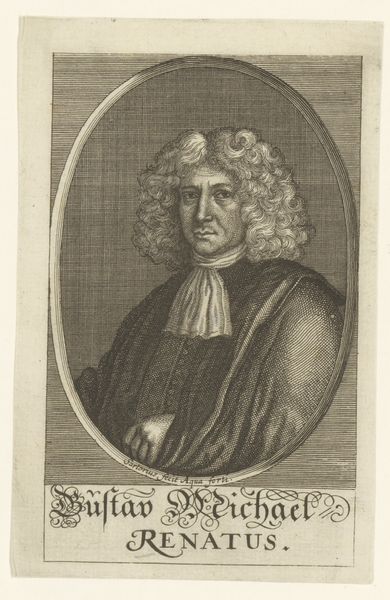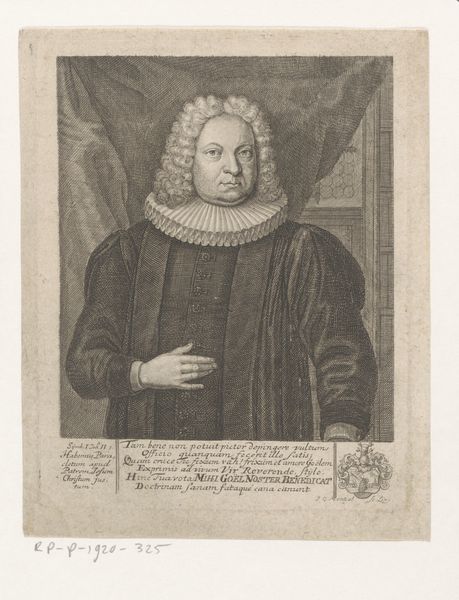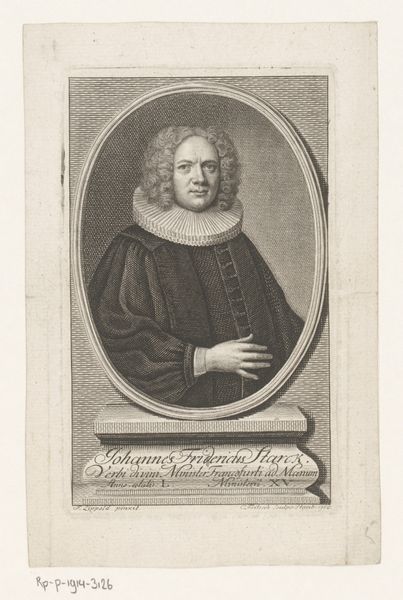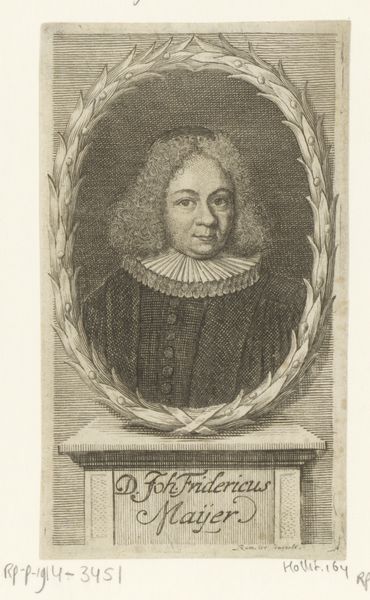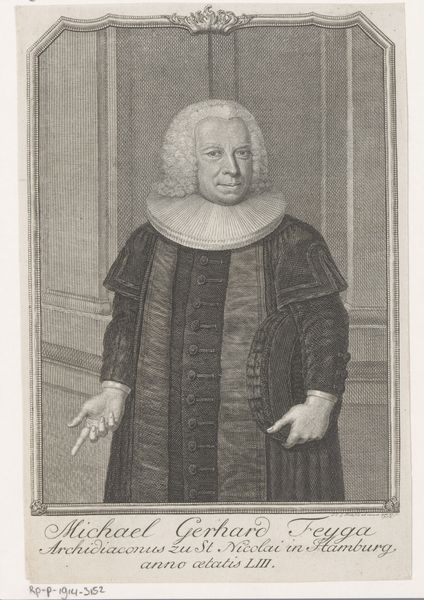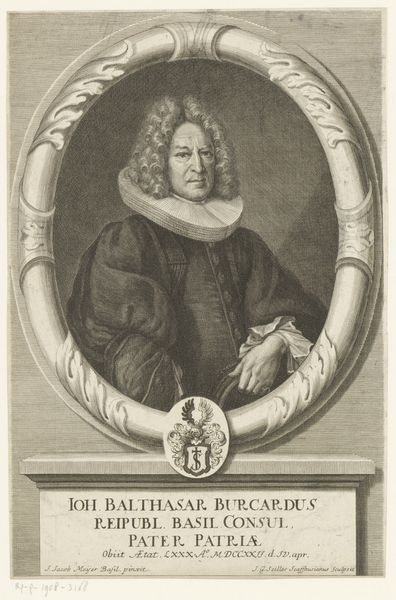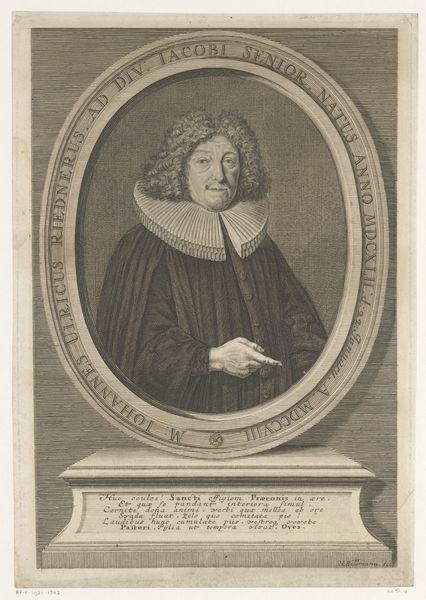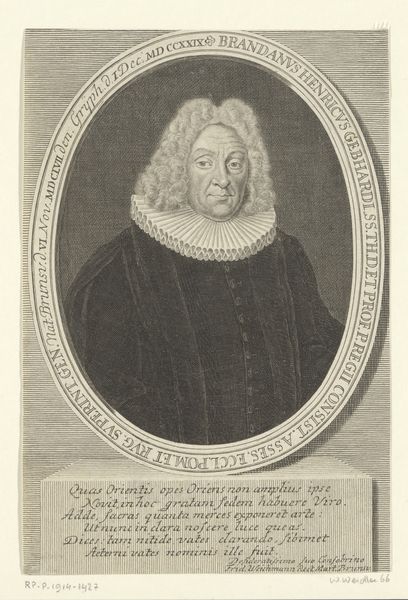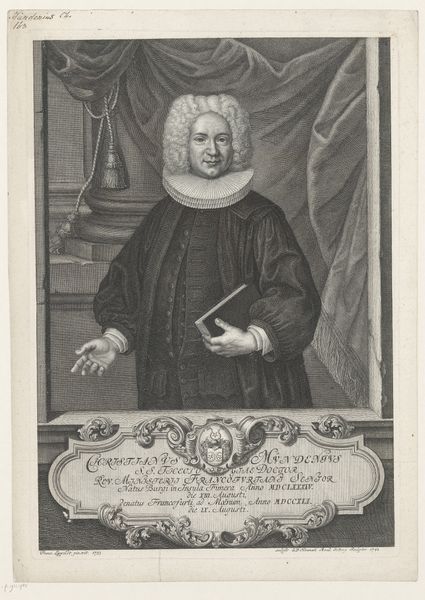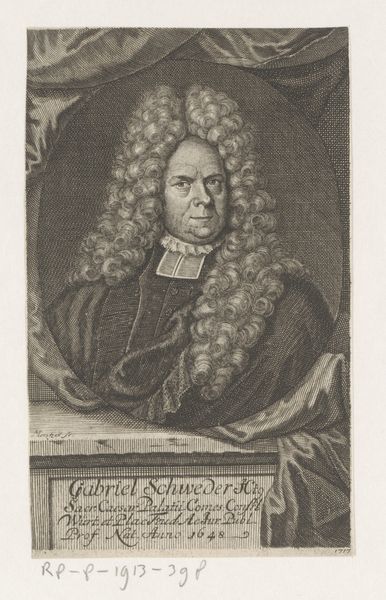
engraving
#
portrait
#
baroque
#
old engraving style
#
portrait drawing
#
history-painting
#
engraving
Dimensions: height 159 mm, width 101 mm
Copyright: Rijks Museum: Open Domain
Curator: Before us, we have an engraving titled "Portret van Samuel Werenfels," made sometime between 1673 and 1740 by Johann Georg Seiller. It depicts Samuel Werenfels, identified in the inscription as a Doctor of Theology and Professor. Editor: My first thought is about the incredibly detailed technique. Look at the density of the lines creating tonal variations, especially in the rendering of his hair and clothing. One could imagine how laborious it would have been, the hours required for such a high quality work. Curator: Absolutely, the labor is significant. Consider how Werenfels, as a theologian and professor, occupied a specific socio-political space. Engravings like this served to disseminate his image and reinforce his intellectual authority within a very specific public. How did prints and portraiture solidify elite class status during this era? Editor: It also speaks to the rise of print culture. Think of the workshops involved, the division of labor required for mass production of this engraving. How were those artisans regarded? What sort of workshop would be responsible? We might be looking at the surface, but these materials represent the underbelly of intellectual and social prestige. What kind of paper was employed? Where did that come from? Curator: And what of Werenfels' social position reflected through fashion? His ornate wig and the fine fabric of his robe all represent class. It suggests access to trade networks and consumer goods that reflect the prevailing hierarchical values of the time. Does it show how cultural hegemony reproduces itself? Editor: Precisely. And let's not forget the physicality of the printing process itself. The pressure, the ink, the specialized tools involved in translating an image from plate to paper. What were those workshops really like? Were those engravers recognized, or seen as faceless functionaries to reproduce an important person’s face? These details offer clues for an image designed for widespread dissemination and to construct ideas. Curator: Considering this engraving allows us to interrogate the intersection of religious authority, artistic production, and early modern social structures. I'm particularly struck by how such a "simple" portrait reveals these complex intersections. Editor: And by grounding our thinking in the labor and materials behind it, we hopefully shift away from seeing art as purely representational towards seeing it as part of a bigger web of systems, labour and, above all, relations.
Comments
No comments
Be the first to comment and join the conversation on the ultimate creative platform.

